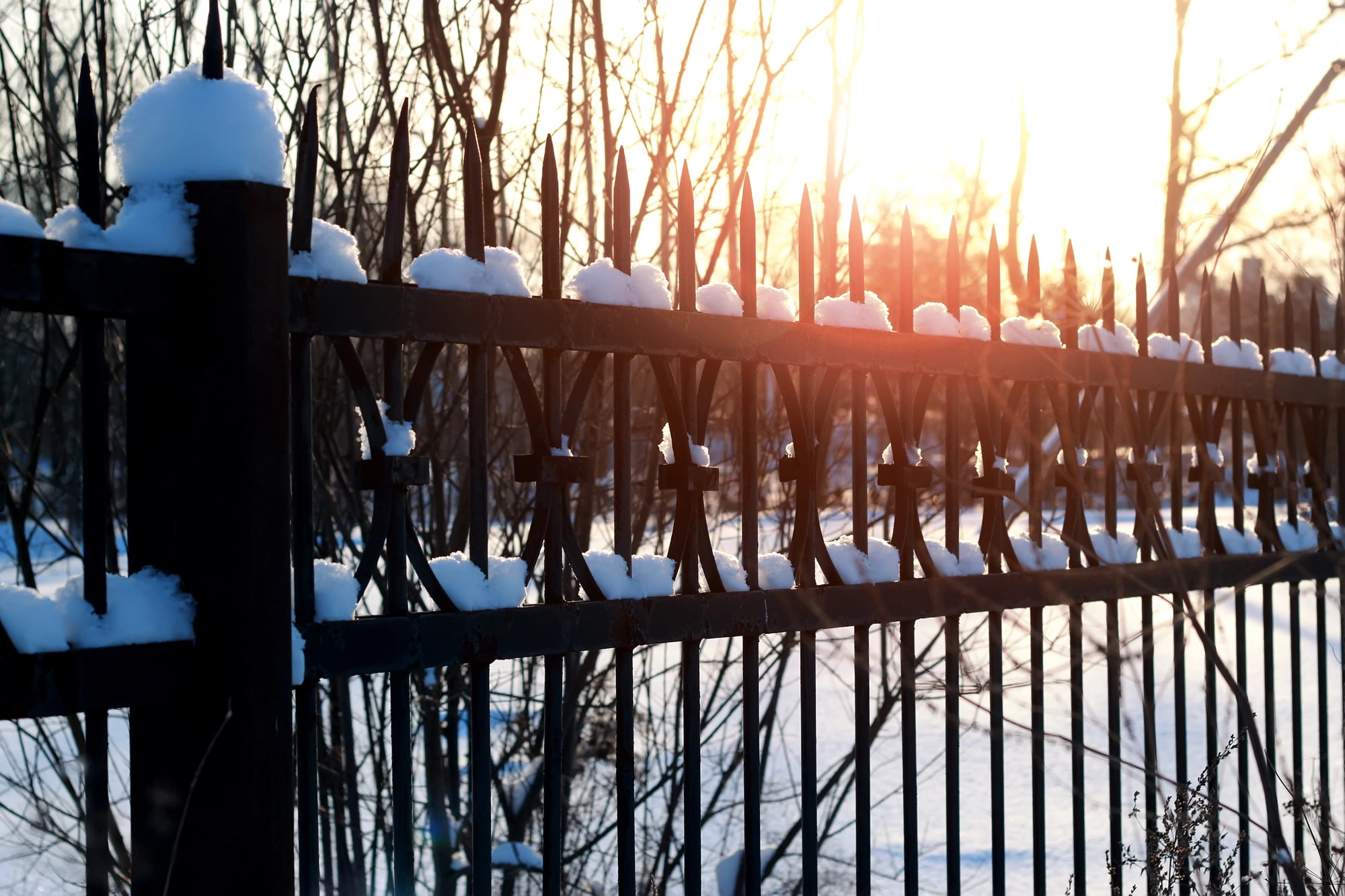
Seal Openings in Fence Posts
Make sure there are no unnecessary openings in your fence posts. If post caps are missing or damaged, replace them immediately. Openings allow water to seep into the posts, and when that water freezes, it expands. This expansion can cause cracks, weakening the structure of your fence over time. Sealing off these entry points will prevent moisture from getting inside and help maintain the integrity of your fence.
Install Posts Below the Frost Line
Proper installation plays a significant role in protecting your fence from frost damage. Your local county or municipality will have guidelines on how deep the frost line is in your area. To prevent frost heave, which occurs when freezing ground forces fence posts upward, posts should be set below the frost line.
Digging deep enough ensures that the base of the post remains stable, even as the ground expands and contracts with temperature changes.
Use Gravel to Prevent Ice Formation
Adding a layer of gravel beneath the post hole is another effective way to prevent frost-related issues. Gravel allows for proper drainage, reducing the risk of water pooling and freezing solid. If ice forms under the post, it can exert enough pressure to lift it out of the ground. By providing adequate drainage with gravel, you can minimize this risk and keep your fence posts firmly in place.
Understanding Frost Heave
If you've ever stepped outside after a sudden frost and noticed ice shoots coming up from the ground, you’ve seen the power of frost heave in action. This happens when the ground cools quickly, causing water molecules to freeze rapidly and expand. The same force that pushes ice out of the soil can push fence posts upward, destabilizing the fence. Installing your fence correctly and using the right materials can mitigate the effects of frost heave and maintain a stable fence structure.
Avoid Fence Maintenance in Extreme Cold
If temperatures drop to extreme lows, it's best to hold off on fence repairs or maintenance. Certain materials, like vinyl, can become brittle in very cold weather, making them more susceptible to cracking. If you need to repair, wait for a milder day when materials are less likely to break under pressure. Planning ahead and performing necessary maintenance before the coldest months arrive can save you from dealing with damage in the middle of winter.
Key Your Fence Intact Through Winter Freezes
Protecting your fence from frost damage starts with proper installation and preventive maintenance. By sealing post openings, setting posts below the frost line, using gravel for drainage, and avoiding repairs during extreme cold, you can extend the life of your fence and keep it looking great year-round. With these precautions in place, your fence will be better equipped to handle the challenges of winter weather.

